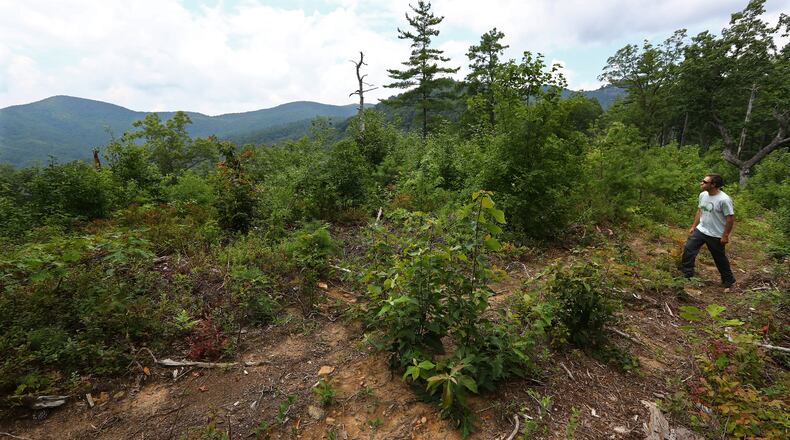The images of the devastating wildfires that have obliterated entire communities in Washington, Oregon and California are shocking. And while they may seem otherworldly and far away, they hit close to home, as more than two-thirds of Georgia is covered by forests. But why don’t we have more large wildfires in Georgia?
Georgia is the number one forestry state in the nation, and the Georgians who steward much of our forestland have been practicing sustainable forest management for decades, based on sound scientific principles and research. About 91 percent of Georgia’s forests are privately owned, much of which are considered “working forests.” These working forests are managed, harvested and replanted to provide goods we all use every day while serving as a backbone of our economy and environment. The trees in working forests don’t just give us timber and toilet paper; they also absorb carbon dioxide – the most significant cause of climate change. Many of the products created from those trees can store that carbon for decades.
Credit: contributed
Credit: contributed
The two most important tools we have to mitigate wildfire risk are sustainable timber harvesting and, ironically, fires. The concept of prescribed fire, or controlled burns, has existed in our landscape for centuries. These low-intensity, carefully managed fires, set historically by indigenous peoples, reduce competing vegetation, improve habitat for wildlife, and reduce dangerous buildup of combustible forest fuels. In addition, through periodic harvesting and thinning of trees in adherence to best management practices, remaining trees are healthier and more resistant to pests and disease.
Over time, suppressing fire and limiting harvesting has become the dominant approach in other regions, such as the western U.S. But an absence of fire and harvesting means that dead trees and fallen branches, needles, and leaves are not removed. In addition, overcrowded forests are more vulnerable to pests and disease. As we have seen in western states, fires in unmanaged forests are a major concern, as they have more fuel to burn, making them hotter and harder to extinguish.
To get ahead of the problem of wildfire, private landowners may choose to work with a consulting forester – who must be registered by the state just like a nurse practitioner – to determine the objectives for their land. Together, foresters and landowners develop a management plan – multifaceted documents that include scientific and economic analysis focused on wildlife biodiversity, watershed management, timber production and more. That plan will include prescribed fire, sustainable harvesting, tree planting and many other activities focused on developing a healthy forest that grows more wood while sequestering more carbon and cleaning more water.
But the process of ensuring healthy, resilient forest landscapes does not stop with the forester and landowner. All Georgians have an opportunity to keep our state’s working forests healthy and maximize their role in helping to address climate change. By making the simple choice of using paper and wood products that are biodegradable and recyclable, we promote management practices that keep our forests healthy, our economy strong, and our communities sustainable.
Think bigger than plates and napkins - innovation has led to the recent development of mass timber beams and panels that are as strong as steel and concrete. These building materials are beautiful and natural, and they store carbon as opposed to creating it – which is the case with more traditional concrete and steel beams. Learn about advancements in forest building products and seek them out. The use of more sustainable products provides economic stability for forest landowners, further allowing them to manage their land for climate resilience and wildfire mitigation, as well as supporting clean air, clean water, and wildlife habitat.
Today, we have more trees in Georgia than we did in 1950. We are planting more than 227 million trees each year, and we are growing 48 percent more wood than we harvest annually, all while leading the nation in timber harvested and total acres of working forests. Georgia’s working forests are a national success story, and we all benefit. I invite you to do your part to help us conserve our forests and ensure that the benefits they provide to our economy and our environment are here for future generations of Georgians.
Andres Villegas is president and CEO of the Georgia Forestry Association and Foundation.
About the Author
Keep Reading
The Latest
Featured



